https://www.youtube.com/watch?v=Hwvh29UQKUM
2 Approaches to Drawing Animals at the Zoo with PROKO!
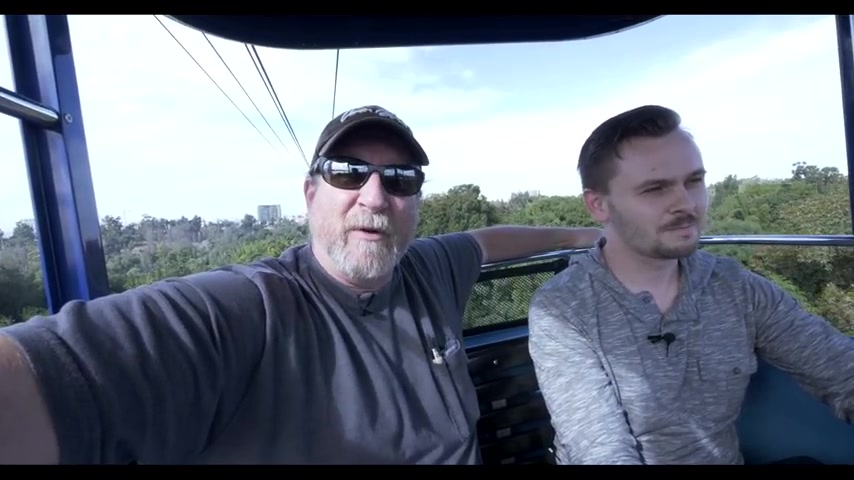
Everybody is here and I am with Stan Proco and we are at the San Diego Zoo and we're going to be doing some animal drawing today and we're really excited .
We're going to do some live animal drawing .
I want to talk to you guys about what to think about how to think about anatomy when you're drawing live animals and they're moving around breaking things down into different shapes .
So we're going to enjoy this ride and get going and hope to see you later .
So , one of the things I really loved about drawing with Proco is how he and I both have different approaches to drawing animals .
Um I've got a little bit more experience .
So when I sit down , I know a little bit more now about the anatomy .
So here you can see I'm starting , I'm not worrying about the anatomy because I know it .
So I'm just looking at that big shape , that big flat shape and then I fill in the anatomy .
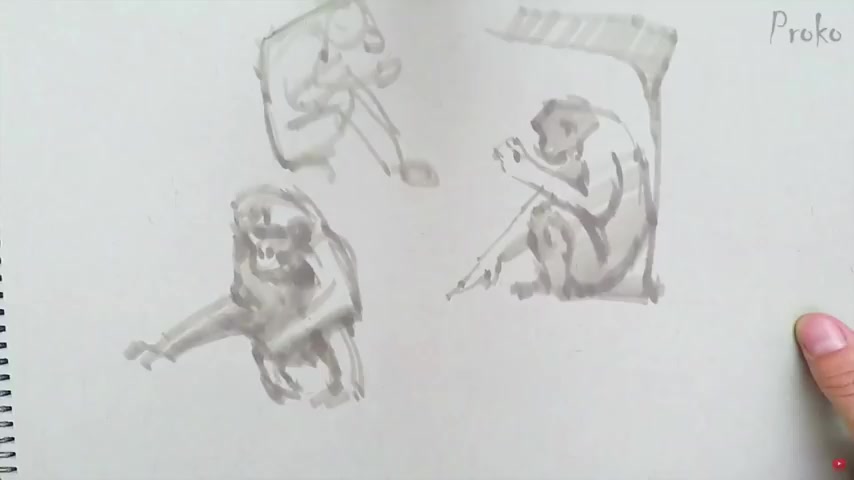
I fill in the details and I'm very line oriented .
Um I start out thinking about the flat surface and then I fill in my volumes and here Proco one of the things I love about Proco here is , is his loose approach .
Here .
He's going for gestures and he's getting so much personality so quickly .
Um I just , I love these drawings because these apes , they were constantly moving , constantly showing us their personality .
And through these small loose drawings , uh Stan was able to get these beautiful um attitudes .
When here , sometimes you get a pose that you just can't resist .
And so this line that sat and posed with me so well .
And I quickly jotted down the line work and then filled it in with detail .
And it really does help .
Um you know , Stan will talk about it all the time and I do too .
It really does help to understand a little bit of the anatomy .
Before you go out , I understand animal anatomy .
I've been studying it for a long time .
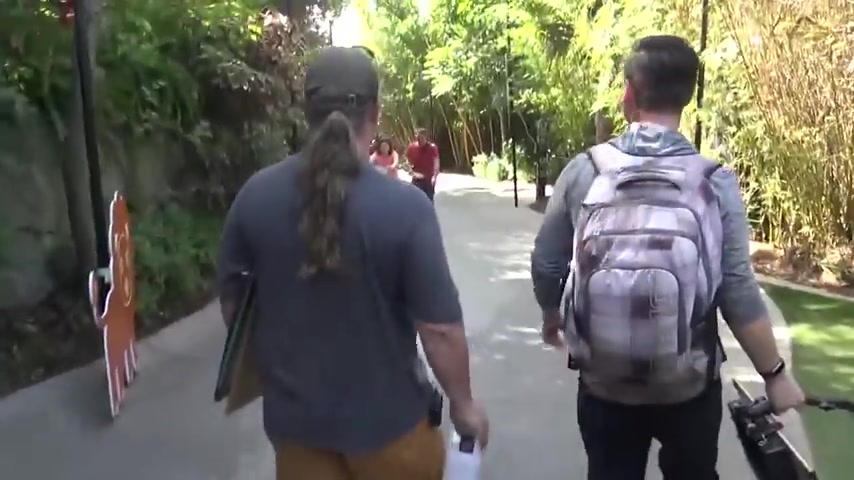
And so for me , if it's a little bit more uh natural Stan , who's an expert with human anatomy , um He admittedly struggles a little bit with , with animal anatomy .
But as you can see here , uh apes that are so close to us , obviously in their anatomy , uh Stan just took off and one of the things I love about his approach here is that volumetric style .
He loves uh that light and shadow , you know , and it's , and , and it gives so much volume to his drawings .
Look at the size of this big male that he , he , he's got a great butt , but he posed for it so well and watch how Stan finds that volume through just light and shadow and it just turns in space .
And I really , really love this drawing .
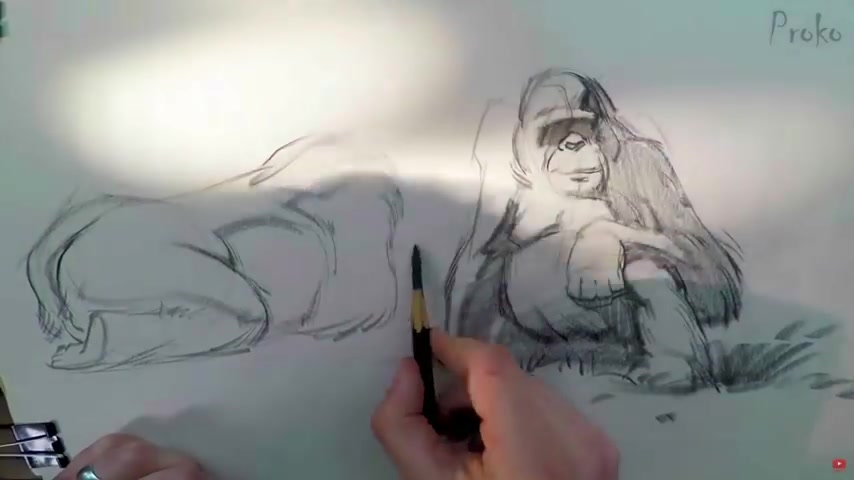
Um And the other thing too , I love about his style , the way he portrays light is he finds that course , look at the core of the shadow , meaning that dark line that defines the shadow um from the light and the dark area and it really gives it a great sense of bounced light .
Um And so there's really three values you see the , the brightest bright , the kind of the midvale shadow and then the darkest darks .
And it really gives it a great , a great feel .
My approach here was a little bit different .
I , I always approach when I'm doing my animal sketching quickly with a lot of line I get in there and I try to define those silhouette shapes .
And then from there , I find the form .
So if you look at the , the shape of her head , it's a big block uh kind of a square and I would define that square first and then fill in the details .
Lucky for me , she posed really well for me , other times , you're not gonna be as lucky here .
I have a line that kept moving back and forth .
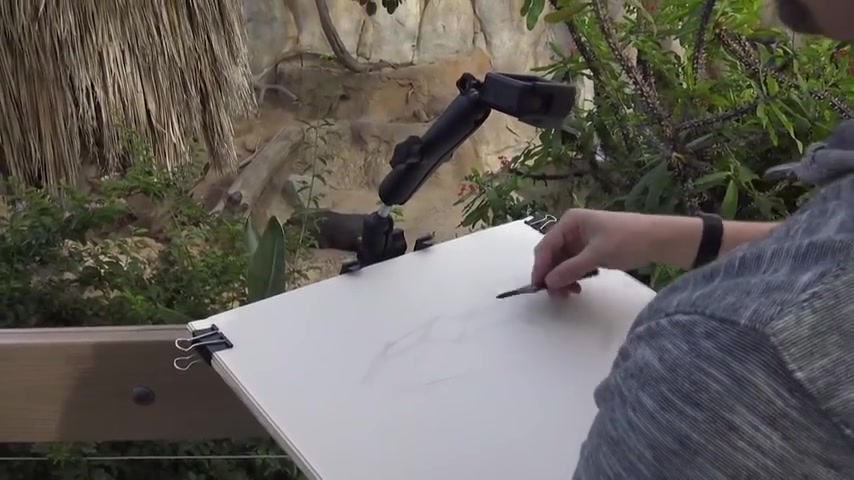
And so as he would walk back and forth , I'd sketch a little bit more , a little bit more and a little bit more until I finally had a drawing .
He kept walking back and forth like this .
Um But once again , I did know , I know cat anatomy .
And so that really gave , gives me a leg up .
And so if you want to go and sketch at the zoo , try to brush up a little bit on your uh on your animal anatomy , especially if you know what you're gonna draw .
If you're going to draw something specific , then get in there and try to learn some anatomy .
This is a great approach that Stan's doing here .
Um These are tapers that we're drawing .
Neither one of us really knows a taper's anatomy .
I mean , we know the basics , but what Stan's doing here is he's looking at the animal and he's finding its , its shape , the geometric shapes that it's making .
And you can see he's going in and he's just making really just a series of blocks that define the form of that taper sleeping in front of them .
And you can see it's very three dimensional , it just looks like wooden blocks .
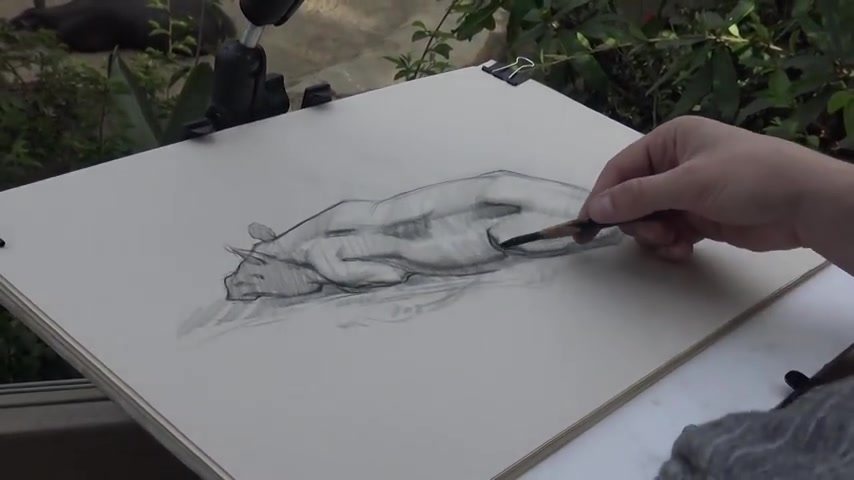
But as he refines it , as he softens the edges , he uses that shape to build on to , to build the anatomy .
And then his knowledge of light and shadow fills that in .
And he ends up with an absolutely beautiful , beautiful drawing .
In this case here , I was drawing a chimp that posed for me really well .
This was just a case of drawing quick gesture .
I loved his shape .
I loved everything about him and , and this guy , sometimes you have to be ready to just go .
This guy went over , he sat down and quickly I grabbed the , the board and , and did this quick sh uh drawing of him .
Once again , a little bit of my knowledge of human anatomy helped fill that in .
And then last , but not least this , this girl , she came over and she was so interested and what I was doing .
And uh I just included this because I was , I , I was completely fab flabbergasted .
She kept knocking on the window and wanting to see what I was drawing .
She was absolutely interested .
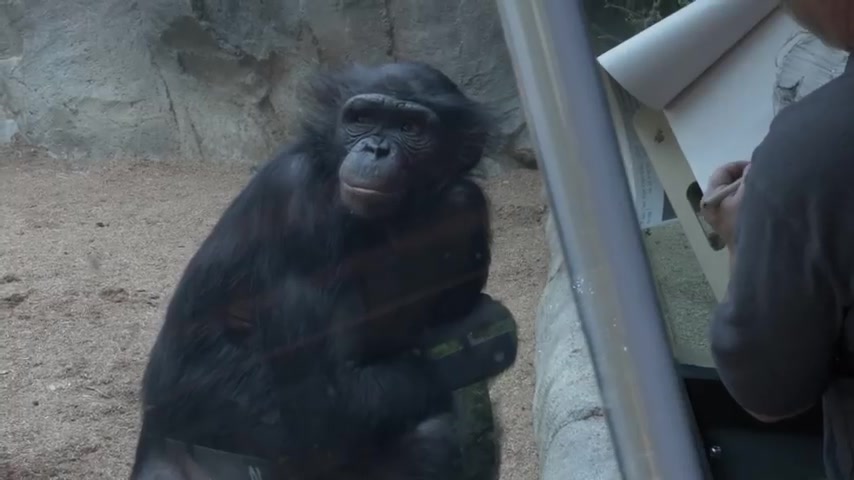
She wanted to see my hat and she wanted to see my drawings and even uh you can see she'll settle in , she just kind of settled in and , and watched with complete fascination .
I heard later on that she al also draws and she even goes , yeah , right there .
So all in all what an amazing time we had , uh you know , any time you can get to the zoo , San Diego Zoo is just the best zoo in the country as far as I'm concerned .
Um But just get out there as often as you can .
And you know , there is no single approach to drawing .
If you're not familiar with the animal anatomy , then try to brush up on it before you go .
But , you know , look at Stan's approach as well .
He's not as familiar , but he knows form .
And so in , in a lot of these drawings , I was looking at what he was doing approach and trying to emulate what he was doing and mixing it with my own style .
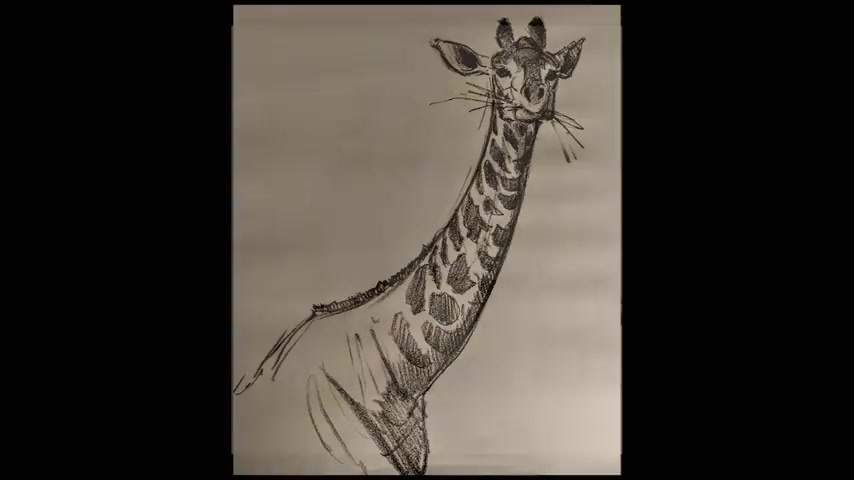
And so for me , even though I've been doing this for years and years , I learned something new , you know , somebody was asking me , you know , because I draw animals so often .
Why do I keep doing it ?
Well , it's because of that , that one thing that I just said , I learned something every single day .
And so , um you know , when I'm drawing with Stan , when I'm drawing with other friends , if I'm just drawing by myself , I always see something new .
It's the same reason why people that draw figures for years and years will continue to use models to draw from .
You never stop learning .
So get out there , keep drawing , never stop learning .
And you know , put some beauty back into the world because that's what we need to do as artists and I'll talk to you later .
Thanks .
Hey , thanks for watching .
If you like what you saw , please hit the subscribe button down below , spread the word .
And also if there's something that you're not seeing that you'd like to see , let us know we'd love to hear from you .
Thanks a lot .
Are you looking for a way to reach a wider audience and get more views on your videos?
Our innovative video to text transcribing service can help you do just that.
We provide accurate transcriptions of your videos along with visual content that will help you attract new viewers and keep them engaged. Plus, our data analytics and ad campaign tools can help you monetize your content and maximize your revenue.
Let's partner up and take your video content to the next level!
Contact us today to learn more.